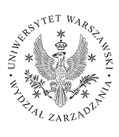Abstract
Because of the increasing expenditure on health care, the great majority of countries are looking for methods of reducing treatment costs. Health authorities apply a number of instruments to control prices of pharmaceuticals and their reimbursement in order to ensure the availability of adequate supplies of medicinal products at a reasonable cost, which largely depends on the specificity of medicines that improve people's health and save their lives. The paper presents methods of limiting expenditure on medicines as well as examples of national policies on price setting and reimbursement systems. It also demonstrates how European Union approaches the issues regarding pharmaceutical pricing and reimbursement in Council Directive 89/105/EEC of December 21, 1988, relating to the transparency of measures regulating the pricing of medicinal products for human use and their inclusion in the scope of national health insurance systems. Member States are free to determine their own policy on controlling public health expenditure on pharmaceutical products. The requirements of Directive 89/105/EEC do not affect national policies on price setting and the determination of social security schemes. Its objective is to attain transparency in pricing and reimbursement procedures. In order to comply with Directive 89/105/EEC, all the criteria on which pricing and reimbursement decisions are based should be objective and verifiable. The Directive also adopts time limits and specific requirements concerning administrative procedures. One of the regulations imposed by the Directive, which should be implemented into national law, is the right of appeal against the decisions made by competent authorities. The measures aimed at limiting the cost of reimbursed medicines involve price freezing, introducing reference pricing, positive and negative lists, generic substitution, profit control, increases in consumers' co-payments. The article offers examples of pharmaceutical pricing and reimbursement systems in select European countries, including Poland.
Abstrakt
Rosnące nakłady na ochronę zdrowia powodują, iż w większości krajów szuka się metod na zmniejszenie kosztów leczenia. Ceny leków i ich refundacja podlegają więc szczególnym obostrzeniom, uzasadnionym również, a raczej przede wszystkim, specyfiką produktu leczniczego, który, jako ratujący zdrowie i życie, powinien być dostępny dla pacjenta. Celem niniejszego artykułu jest przedstawienie metod ograniczania wydatków na leki, sposobów wpływania na ich ceny oraz różnorodnych rozwiązań przyjętych w systemach refundacyjnych wybranych krajów. Zaprezentowane zostanie również prawo Unii Europejskiej dotyczące kwestii refundacji leków i regulowania ich cen, zawarte w Dyrektywie Rady 89/105/EWG z dnia 21 grudnia 1988 r. dotyczącej przejrzystości przepisów regulujących ustalanie cen na produkty lecznicze przeznaczone do użytku przez człowieka oraz włączenia ich w zakres krajowego systemu ubezpieczeń zdrowotnych. Prawo wspólnotowe pozostawia wybór systemu refundacyjnego w gestii państwa członkowskiego, ale stawia określone wymagania odnośnie procedur i kryteriów podejmowania decyzji. Dyrektywa 89/105 zobowiązuje państwo, by decyzje w sprawach refundacji leków i ich cen były uzasadnione, oparte na obiektywnych kryteriach, wydawane w ściśle określonych terminach i by istniała możliwość odwołania się od nich. Działania podejmowane w celu ograniczenia wydatków związanych z refundacją leków polegają między innymi na zamrożeniu ich cen, wprowadzeniu cen referencyjnych, pozytywnych i negatywnych list, częstszym stosowaniu leków odtwórczych, wprowadzaniu limitu zysku, zwiększaniu udziału pacjenta w opłatach za leki. Niniejszy artykuł zawiera przykłady uregulowań prawnych związanych z kontrolą cen i refundacją leków oraz opis rozwiązań systemowych w Polsce i wybranych krajach europejskich.
Recommended Citation
Nędzi, K. (2004). Systemy refundacji i metody regulowania cen leków. Problemy Zarządzania, 2(4), 147-162. Retrieved from https://press.wz.uw.edu.pl/ems/vol2/iss4/10
First Page
147
Last Page
162
Page Count
15
Publisher
University of Warsaw







